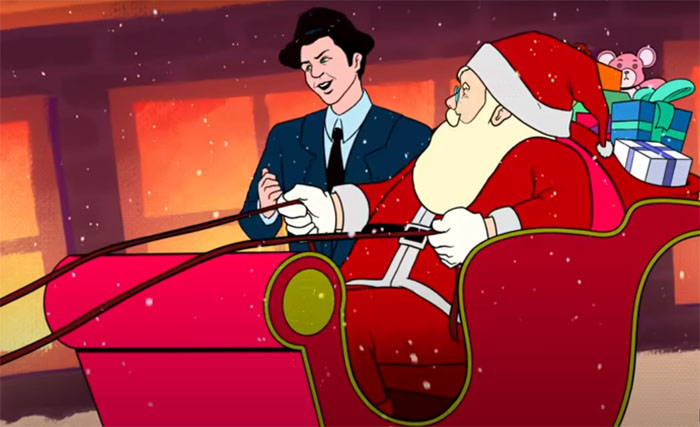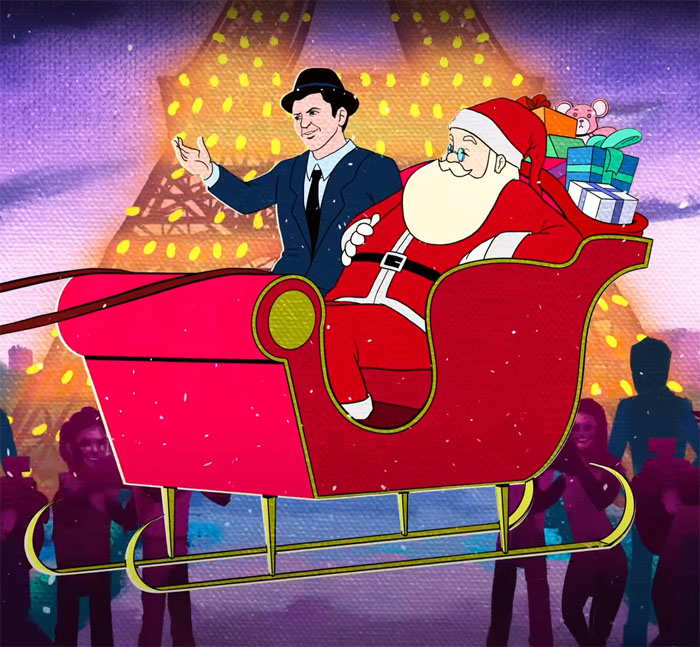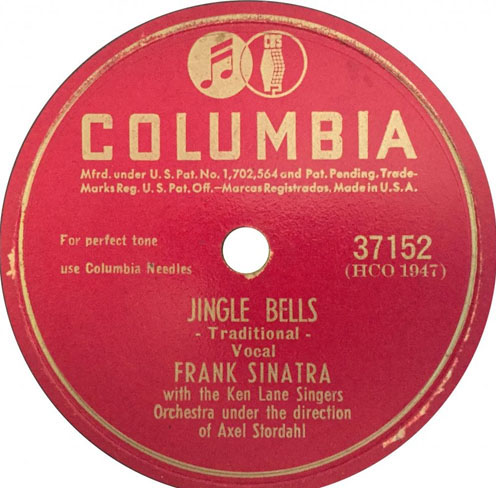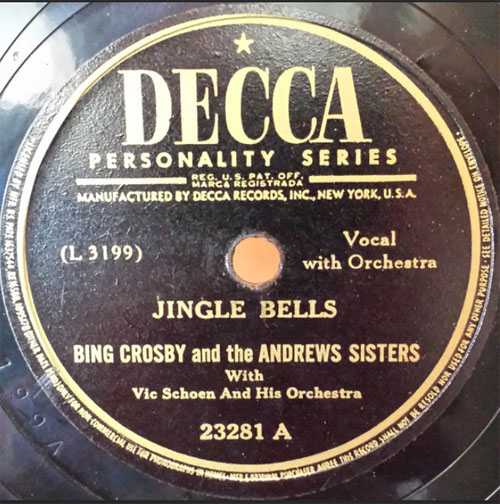"Jingle Bells"
was listed as an October 30,
1889 Edison cylinder record performed by Will Lyle playing a banjo
in "Wangemann's Log-Book (see Edison Cylinder Records, 1889
- 1912, Allen Koenigsberg, APM Press, 1987, p. 123/114, #1).
Theo Wangemann "oversaw
the first methodical production of musical recordings for the
wax cylinder phonograph at Edison's West Orange, New Jersey laboratory
in 1888-89."
Although there are no
known copies of that 1889 Edison record, one of the earliest vocal
examples of “Jingle Bells” does survive embedded as a chorus on
an Edison brown wax cylinder entitled, “Sleighride Party.” Koenigsberg
has suggested that the "Jingle Bells" chorus sung on the
Edison "Sleighride Party" record is presumably the same
tune as played by the banjo in the 1889 "Jingle Bells"
Edison cylinder record.
Listen
to Sleighride Party - a Descriptive with a brief "Jingle
Bells" sung by the Edison Male Quartet, Edison Domestic series
2218, 2-minute cylinder record, released in 1904. (Courtesy of David
Giovannoni and i78s.org). Note: Edison released a brown wax cylinder
2218 "Sleighride Party" in 1898 by the Edison Male Quartette.
Listen
to Sleighride Party sung by the Columbia Quartette with sound
effects, Columbia brown wax cylinder 9040, ca. 1898. (Courtesy of
UCSB Cylinder Archive).
Note: Listening to both
records reveals how two different phonograph companies could have
released the same song and few would probably have noticed or cared
about the striking similarities. Recording artists frequently worked
for multiple record companies so that is one explanation. More likely,
one company used the existing 'record' made by its competitor and
made their own version.
FACTOLA: The
Edison cylinder record "Jingle Bells" played by banjoist Will Lyle,
October 30,1889, is believed to be the first recording of what is
now known in popular culture as a Christmas record. "One horse open
Sleigh" by J. Pierpont was published in 1857 as the original title
but was soon renamed "Jingle Bells" and appeared as such on the
front panel of the sheet music in 1859 (and thereafter).
See Wikipedia's
"Jingle Bells" for more details about the history
of the song, lyrics, composition, authorship, and recordings.
See “Jingle Bells”
History Takes Surprising Turn in BU
Today by Joel Brown, December 8, 2016 which challenges where
and when "One horse open Sleigh" was actually written.

"The One Horse Open
Sleigh" by J. Pierpont. Oliver Ditson & Co., Boston, 1857 (Source:
The
Lester S. Levy Sheet Music Collection, Johns Hopkins).
Jingle Bells: A Controversial
Past
See Martin Chilton's
‘Jingle Bells’: The Christmas Classic With A Controversial Past
(UDiscoverMusic.com, Martin Chilton, December 11, 2023) for
an interesting backstory to this song which Chilton describes as
"Originally penned as
a racy romance song about taking an unchaperoned sleigh ride, ‘Jingle
Bells’ has become one of the most popular Christmas songs ever."
Also on Chilton's page
is a link to an animated creation of Frank
Sinatra singing "Jingle Bells," his being one of the
most popular Christmas recordings ever made. According to Billboard.com's
2023 rankings, Sinatra's "version of the iconic carol is
the only one ever to have hit the Hot 100."

Illustrations: Universal
Music Group


"Jingle Bells"
by Frank Sinatra, released on Columbia Record 37152, November 4,
1946.

"Jingle
Bells" by Bing Crosby and The Andrews Sisters, Decca 23281
A (10-in. double-faced). Released September 29, 1943 (DAHR)
FACTOLA: Judy
Garland got her start in show business when she was only 2 years
old, singing “Jingle Bells” on stage at her parent’s theater. She
was so thrilled with the applause that she sang the song five times
before her Dad carried her off the stage. (Source:
Learn the Legends - University of Wisconsin-Madison.)
Jingle Bells"
Voco Record, 1948



